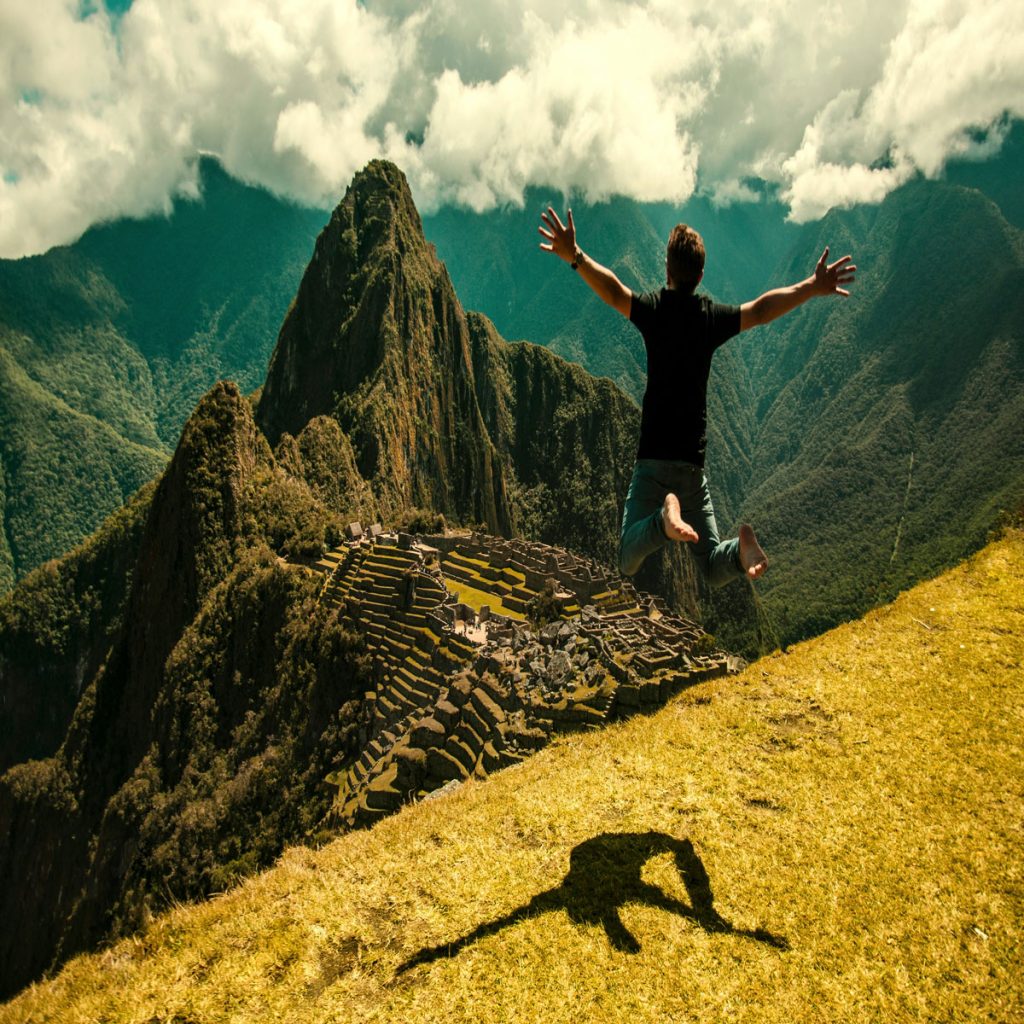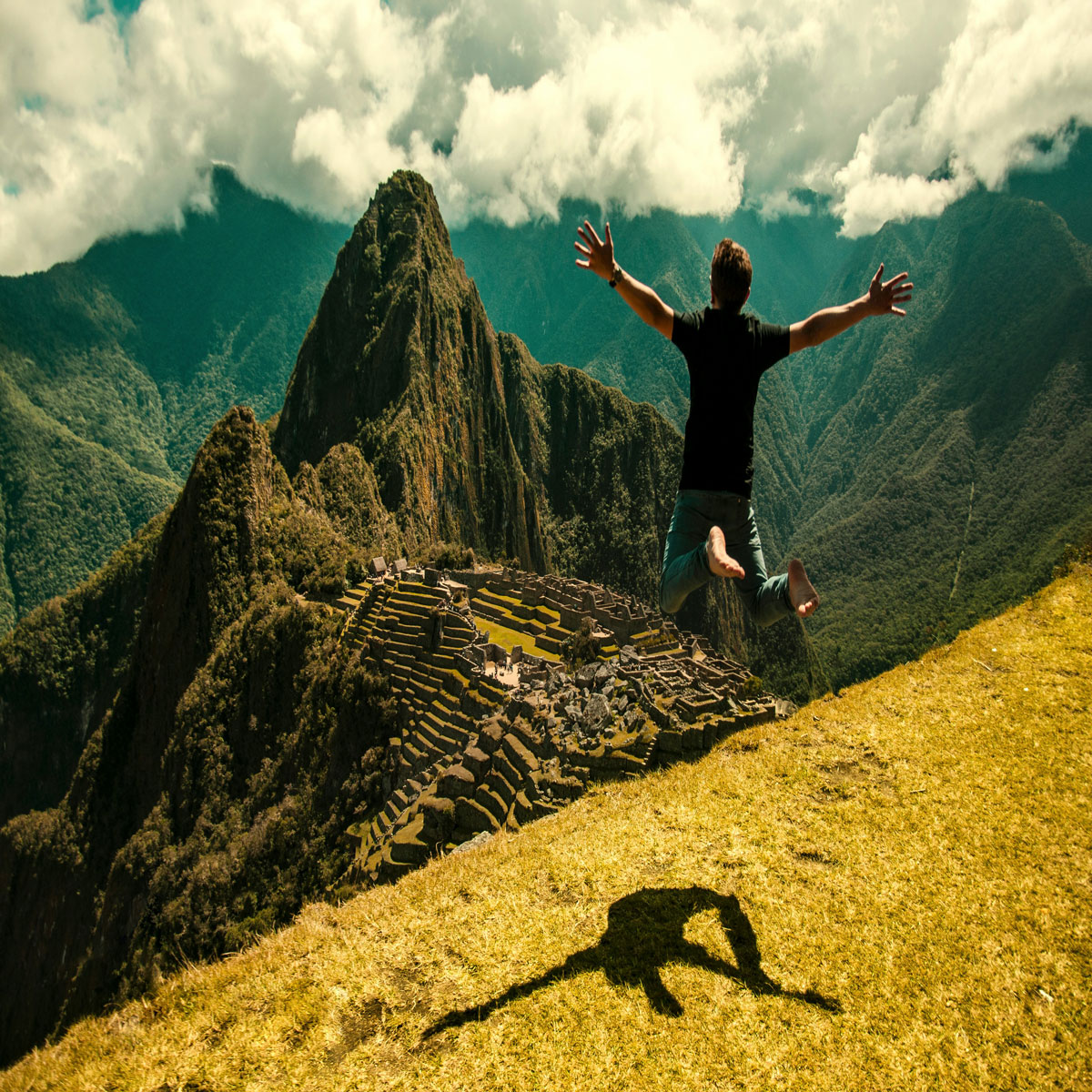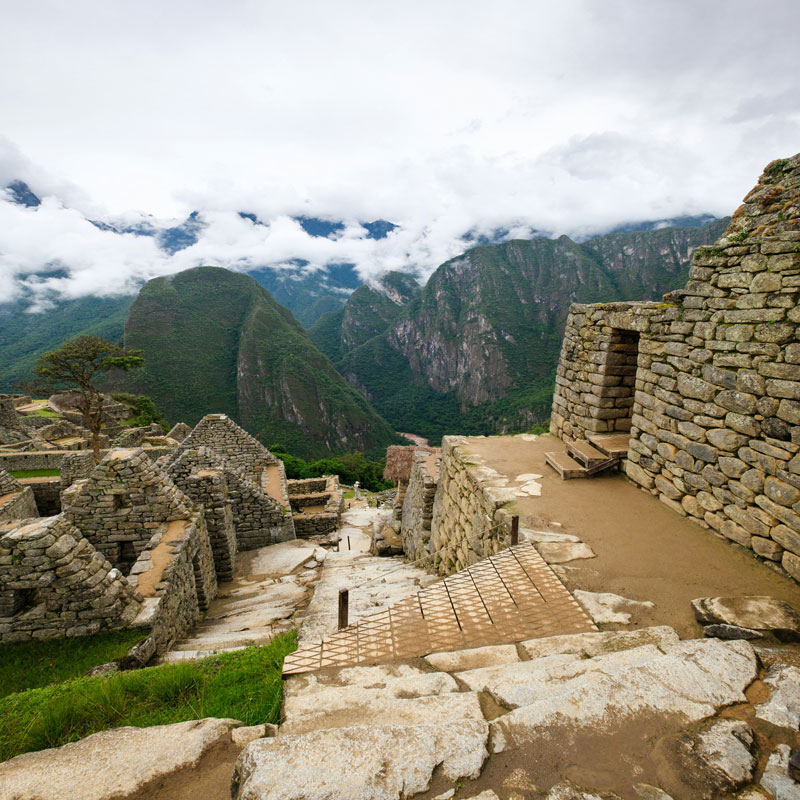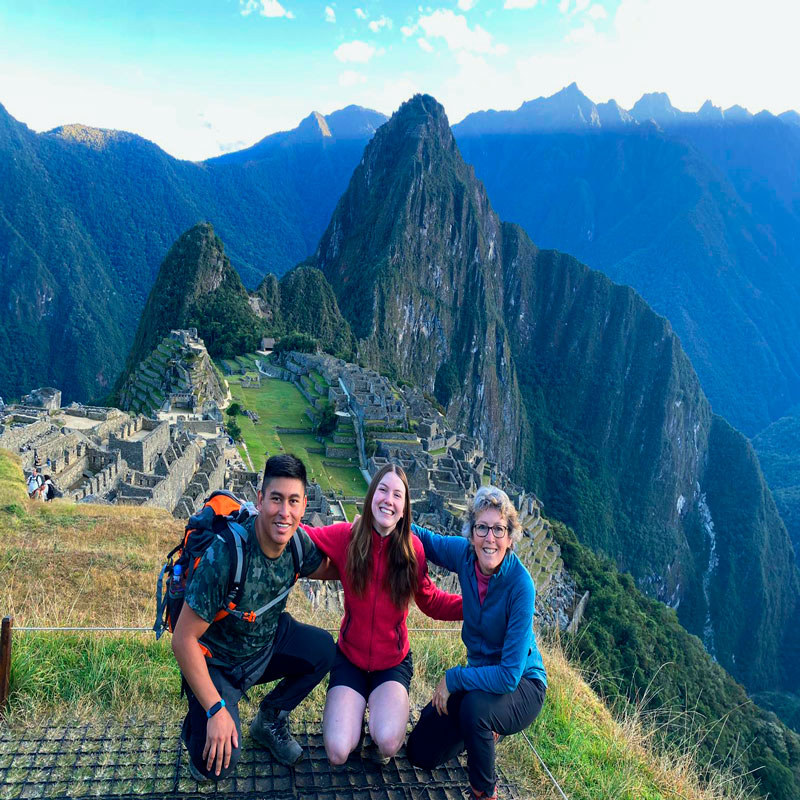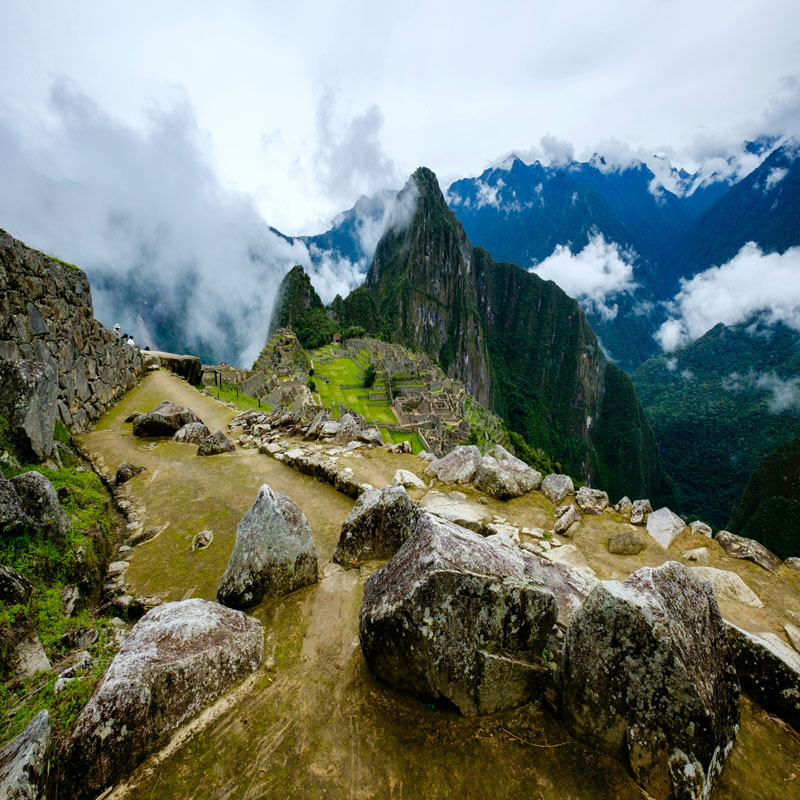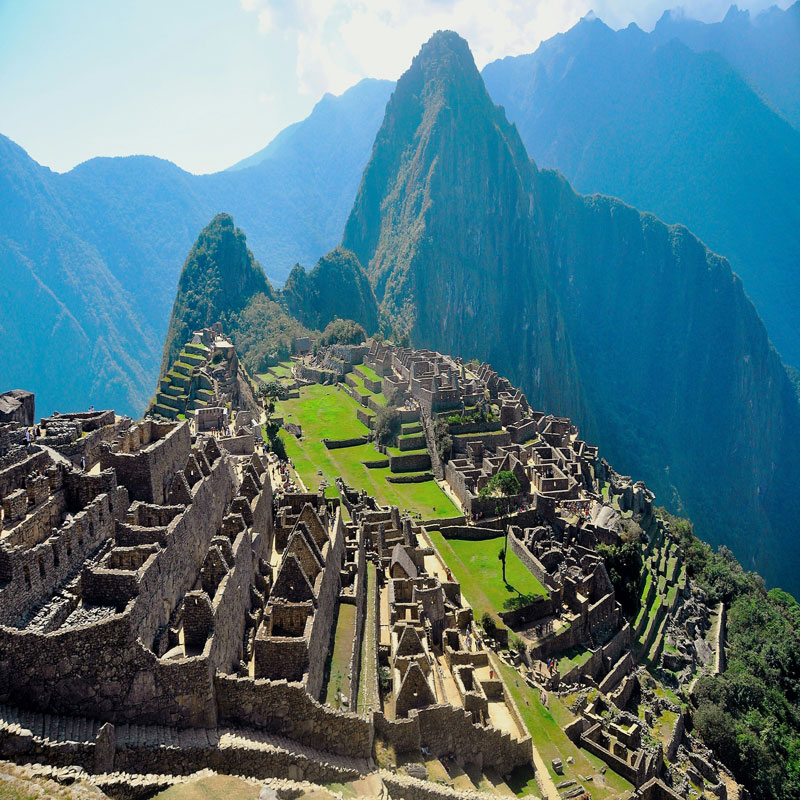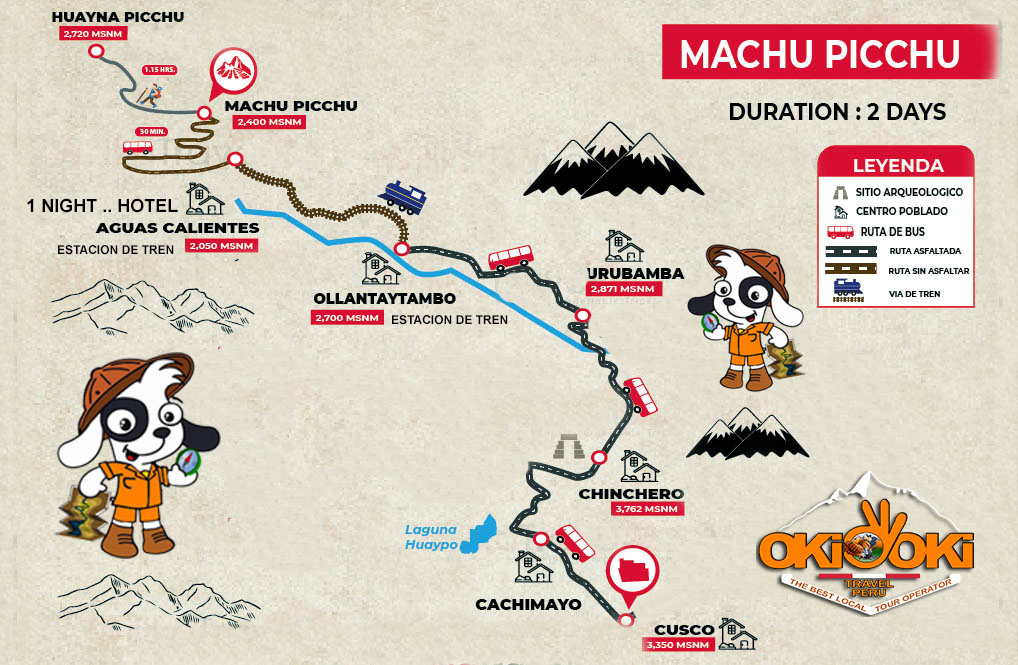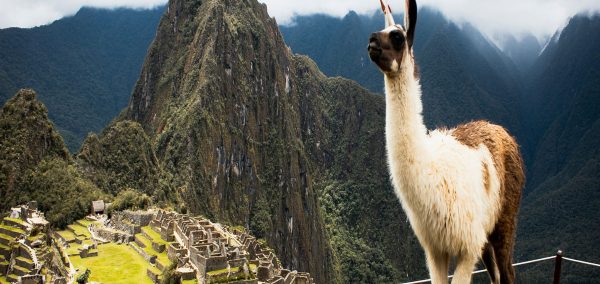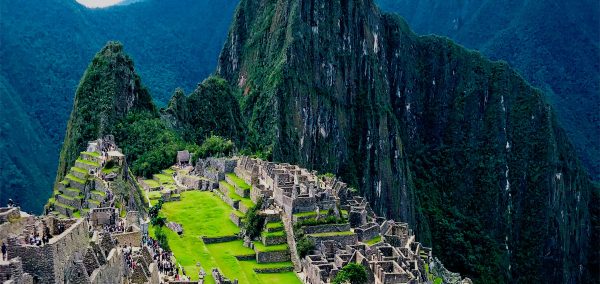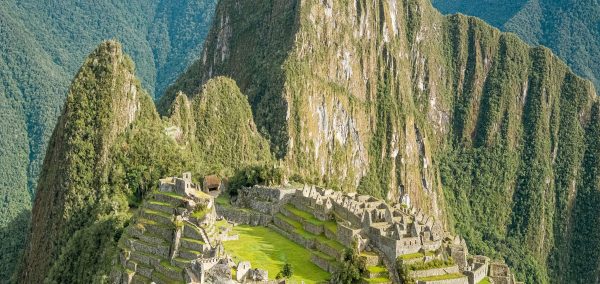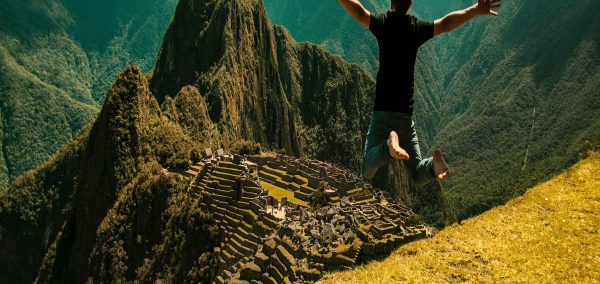🗓️ Day 1: Cusco – Ollantaytambo – Aguas Calientes
Your unforgettable journey to Machu Picchu begins in Cusco!
We will pick you up directly from your hostel at a scheduled time, depending on your train departure. (Important: The day before your trip, we will meet at the Okidoki Travel office to confirm all final details and timing.)
From Cusco, you’ll travel by comfortable tourist transport to Ollantaytambo, where you’ll board the scenic train heading to Aguas Calientes (Machu Picchu Pueblo).
Upon arrival in Aguas Calientes, you’ll check in to a private hostel, where you’ll spend the night.
Later in the evening, you’ll enjoy a group dinner (included), where you’ll meet your guide and fellow travelers to go over the itinerary and important details for your Machu Picchu visit the next day.
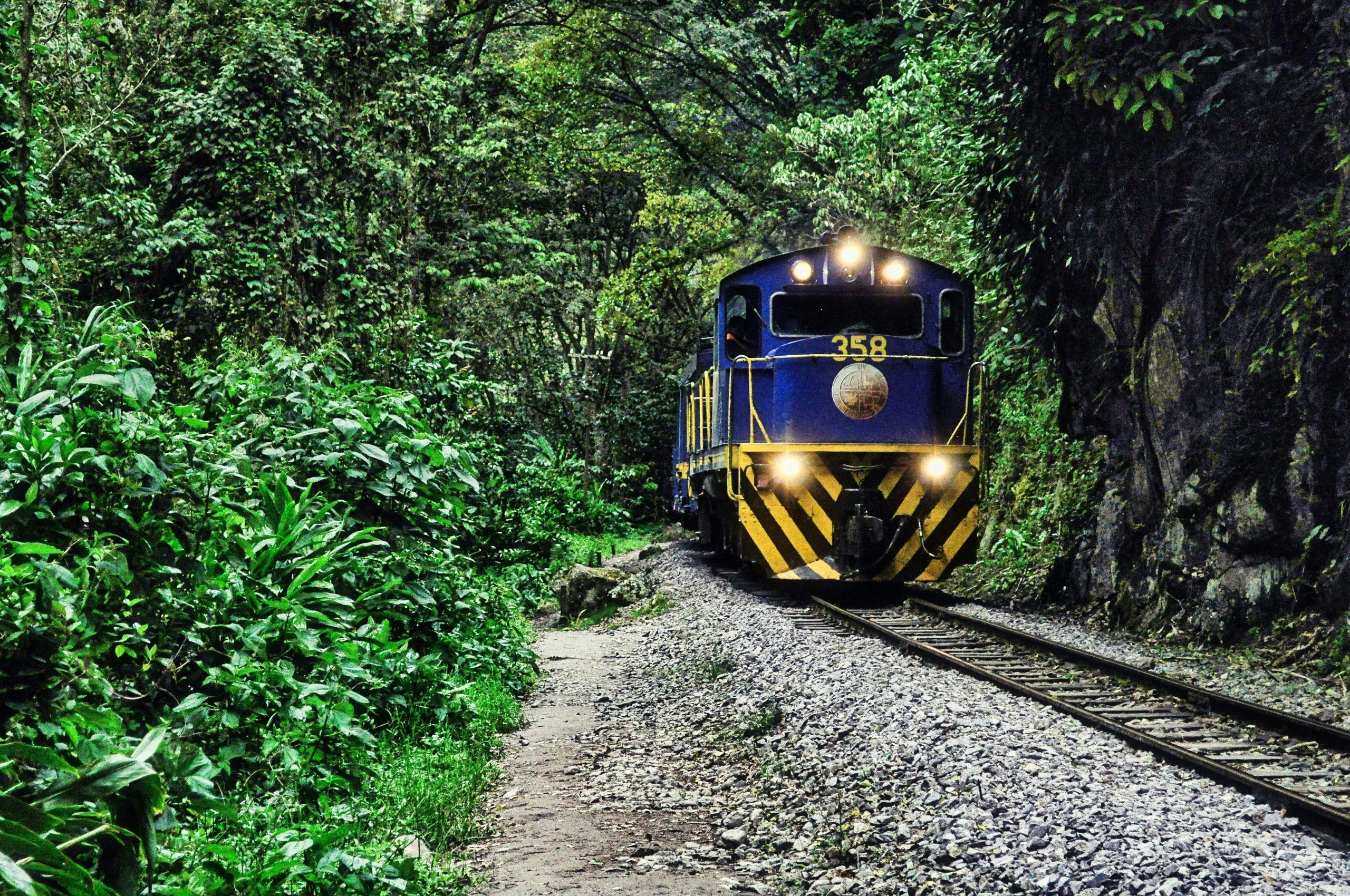
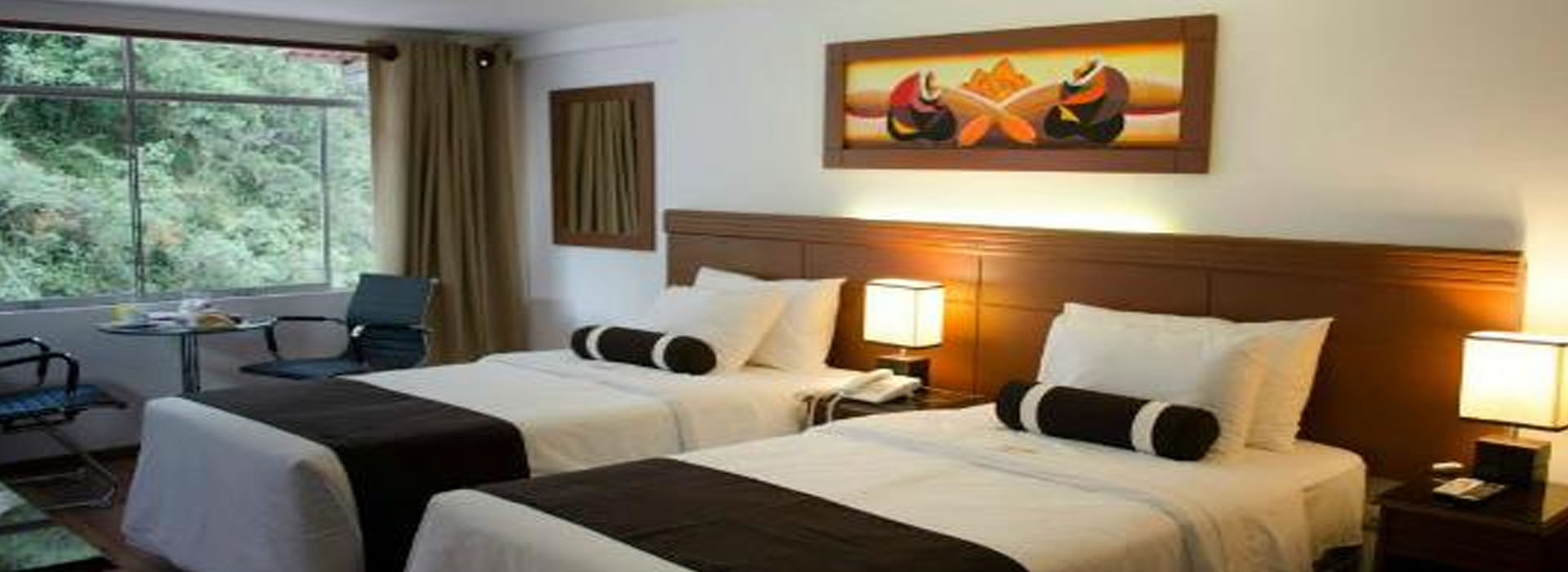
🗓️ Day 2: Aguas Calientes – Machu Picchu – Aguas Calientes – Ollantaytambo – Cusco
Start your day early with a delicious breakfast at your hostel.
At around 5:20 a.m., you’ll take the first bus up to Machu Picchu, arriving at approximately 6:00 a.m. just in time to admire the breathtaking sunrise over the ancient citadel.
Enjoy a guided tour lasting about 2.5 hours, where you’ll explore the most iconic and important areas of Machu Picchu, learning about its fascinating history and mysteries.
After the tour, you’ll take the bus back down to Aguas Calientes, where you’ll have free time to explore the charming town, shop, or relax.
At 2:30 p.m., board the train back to Ollantaytambo, arriving around 4:30 p.m.. From there, you’ll continue by bus for approximately 2 hours back to Cusco, with an expected arrival time around 7:00 p.m. or earlier.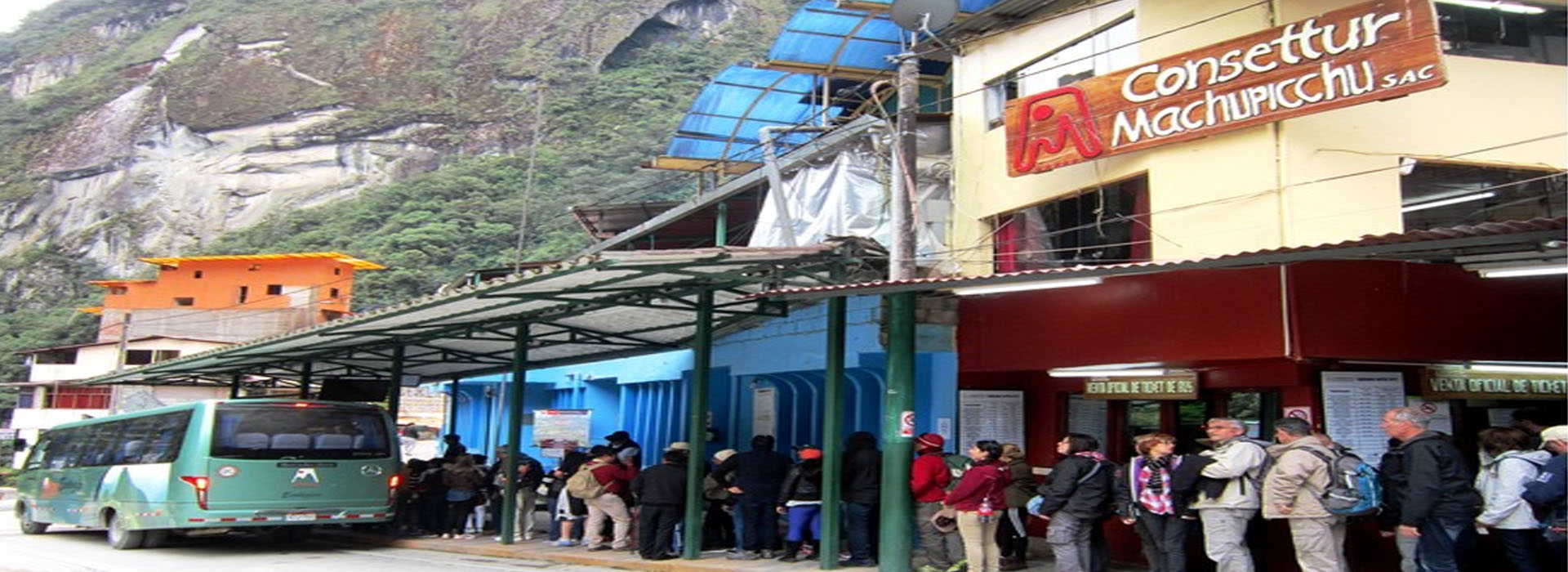
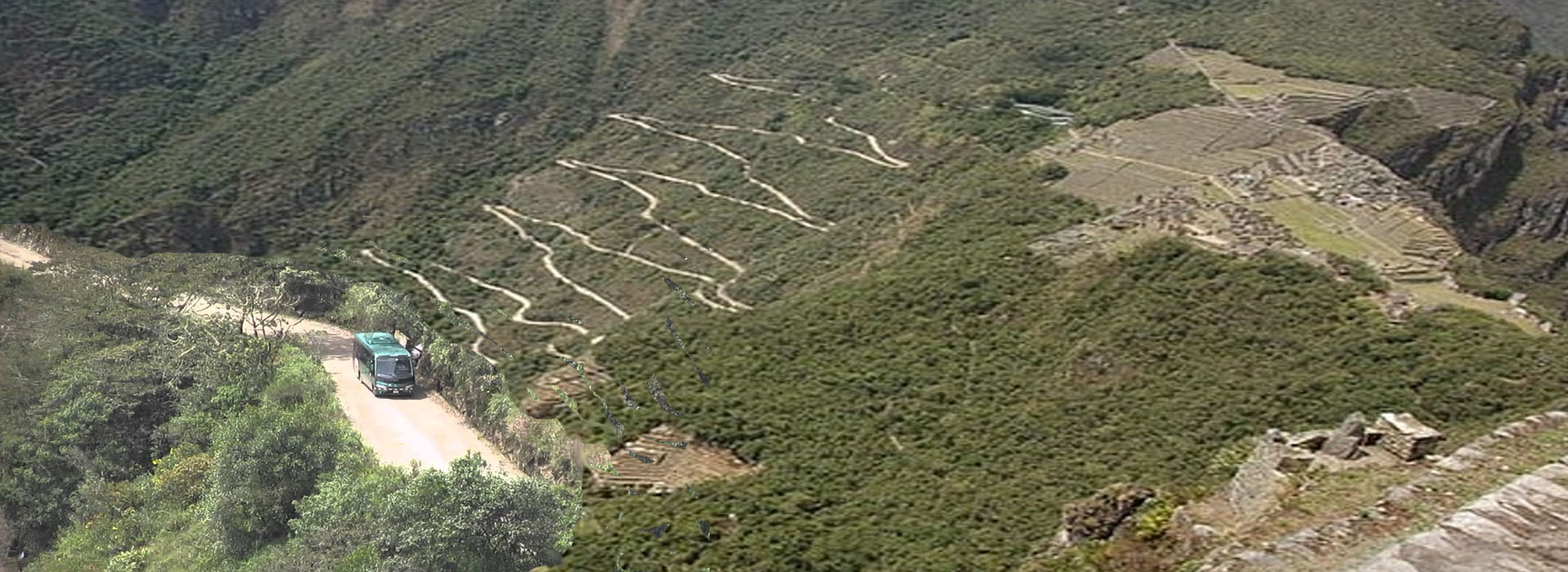
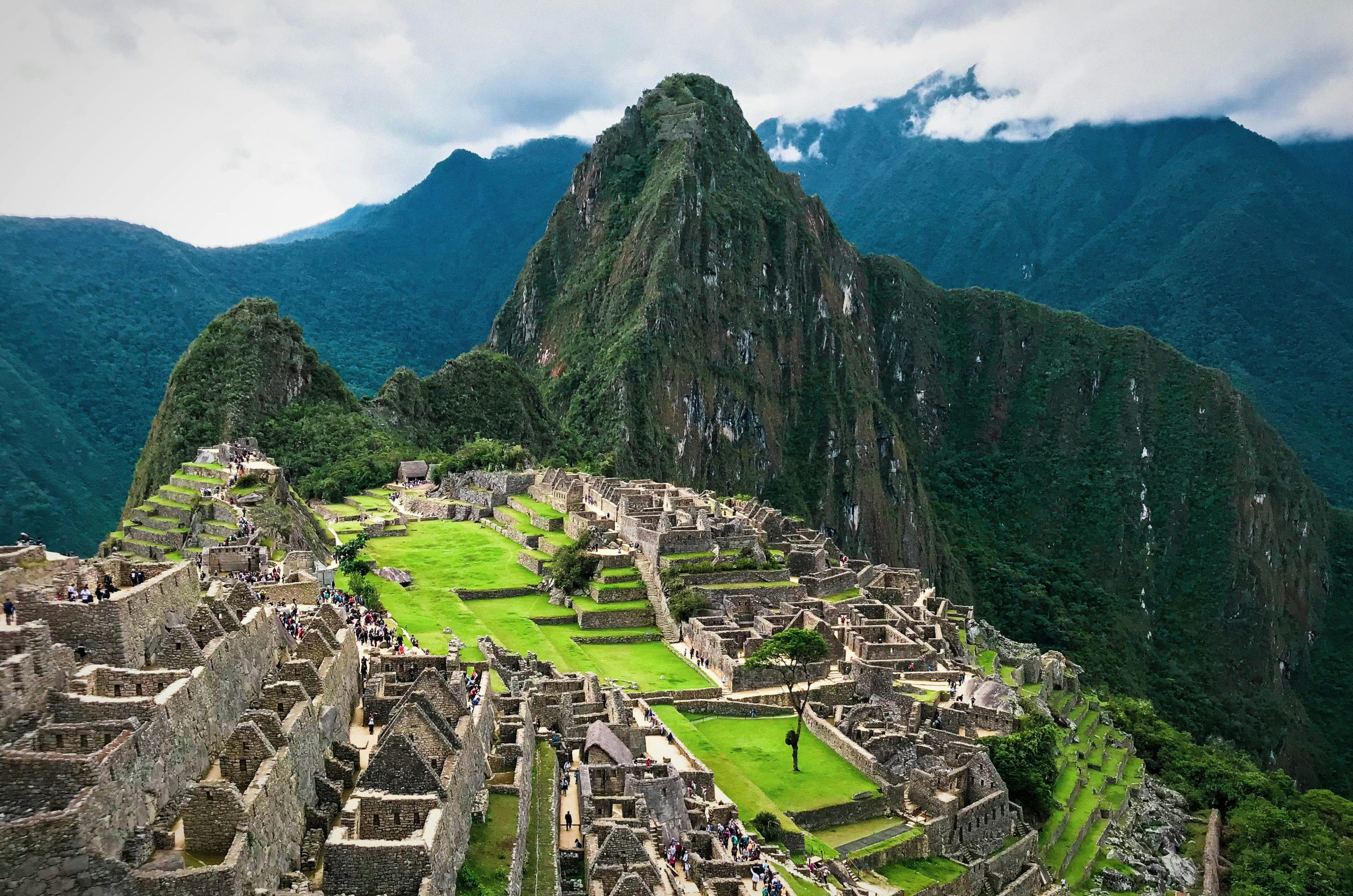
📌 Travel Note:
If you wish to climb an additional mountain such as Huaynapicchu, please make your reservation at least 4 months in advance, especially during the high season from May to September.
For the Machu Picchu Mountain, reservations should be made at least 1 to 2 weeks (half a month) in advance of your trip.
🔍 Important Facts – Travel to Machu Picchu by Train:
-
Included Train Service:
The tour includes the Expedition or Voyager train service.
If you prefer to upgrade to a premium service such as the Vistadome, please contact us in advance to check additional pricing.
-
Group Size:
For the Machu Picchu tour, we limit the group to a maximum of 4 travelers for a more personalized experience.
-
Prices:
⚠️ Important:
The student discount only applies to the Machu Picchu entrance ticket, not the full tour package.
A valid student card copy must be sent before making your deposit—late submissions will not be accepted.
Important points
Reservation & Cancellation Policy for Machu Picchu Train Tour
📝 Reservation Conditions
💵 Deposit Requirement
🚫 Once the deposit is made, there are no refunds under any circumstance.
The deposit is used to secure your Machu Picchu ticket and other services with third-party providers.
❌ Cancellation Policy
-
No date changes or cancellations are accepted.
-
If you cancel, you lose your deposit.
-
These policies exist because:
-
We prepay services and block limited spaces.
-
Government-issued Machu Picchu tickets are strictly personal and non-refundable.
-
Our suppliers do not allow last-minute cancellations.
Booking a trek is a serious commitment, not a game. By reserving, you agree to these terms.
🎓 Student Discount Requirements
-
The ISIC card is no longer valid due to widespread fraud.
-
Other documents such as university notes, internship letters, or expired cards are not accepted.
To qualify for the $20 USD student discount, you must meet all the following:
-
Be 25 years old or younger
-
Present a valid plastic university student ID card (PVC, not paper/cardboard)
-
The card must show:
⚠️ Important:
-
Send your valid student ID and passport before paying the deposit.
-
The government of Peru will verify the discount eligibility—not Okidoki Travel.
-
If your student ID is invalid, you must pay for a full-price adult ticket.
-
If you fail to bring your original card on the day of your visit, your ticket will be void, and a new ticket may not be available.
🎯 Recommendation:
If you’re unsure about meeting the requirements, book as a regular adult to avoid any issues. We are not responsible for rejected student IDs or missed entries.
What’s included
Your 2-day experience includes everything you need for a smooth and unforgettable visit to the Inca Citadel:
🎟️ Tickets & Admissions
-
✔️ Entrance ticket to Machu Picchu
-
🚌 Bus ticket from Aguas Calientes to Machu Picchu (uphill)
-
🚌 Bus ticket from Machu Picchu back to Aguas Calientes (downhill)
🚆 Transportation
-
🚌 Private bus from Cusco to Ollantaytambo
-
🚆 Train from Ollantaytambo to Aguas Calientes (departure)
-
🚆 Train from Aguas Calientes to Ollantaytambo (return)
-
🚌 Private bus from Ollantaytambo to Cusco (last day)
🛏️ Accommodation & Meals
-
🏨 One night stay in a private hostel in Aguas Calientes (Machupicchu)
-
🍽️ Dinner in Aguas Calientes
-
🍳 Breakfast on the second day
🧭 Tour Guidance
-
🗂️ Pre-departure briefing one day before at the Okidoki Travel Peru office
📍 Location: Calle Nueva Alta #644, inside Okidoki Hostal Cusco
-
🧑🏫 Professional guide at Machu Picchu (approx. 2 hours, English or Spanish)
🎒 Everything is arranged so you can focus on enjoying the magic of Machu Picchu!
What’s not included
Please note that the following items and services are not included in the tour price:
-
🚫 Water (bring your own or buy locally)
-
🥗 Lunch
-
🏔️ Entrance to Huayna Picchu Mountain – USD $20
(Reserve at least 4 months in advance for high season: May–September)
-
🏞️ Entrance to Machu Picchu Mountain – USD $20
(Reserve at least 2–3 months in advance for high season: May–September)
-
💰 Tips for guides or staff (voluntary)
💡 Make sure to reserve additional mountain entrances early, especially during peak season.
What You need to bring
To ensure a safe, comfortable, and enjoyable journey, please pack the following essentials:
🧾 Documents
🎒 Personal Gear
-
🎒 30-liter backpack for carrying your personal belongings
-
👟 Comfortable shoes or sneakers suitable for walking
-
🧥 Lightweight rain poncho (weather in the Andes can change quickly)
☀️ Sun & Insect Protection
💊 Health & Food
💡 Tip: Travel light! Only bring the essentials, as you’ll be on the move most of the time.
FAQs
Travel to Huayna Picchu – History of the Iconic Mountain
Often recognized as the iconic mountain behind Machu Picchu in panoramic photos, Huayna Picchu (from Quechua Wayna Pikchu, meaning “Young Mountain”) rises to 2,667 meters above sea level. It forms part of the eastern foothills of the Salkantay massif in the Cusco region of Peru, nestled within the larger Vilcabamba range of the Peruvian Andes.
Huayna Picchu is more than just a backdrop—this mountain holds its own archaeological significance, with Inca structures and terraces built into its steep slopes. Visitors should be aware that while “Machu Picchu” translates to “Old Mountain,” “Huayna Picchu” means “Young Mountain,” illustrating a symbolic duality between elder and youth.
The trail to the summit is steep and narrow, featuring sections of stone staircases carved into the mountain, with handrails and cables for safety. The ascent takes between 45 and 60 minutes, depending on physical condition. The reward? Stunning aerial views of the Machu Picchu citadel, the Sacred Valley, and surrounding peaks.
An Unforgettable Journey: Culture, History & Adventure from Cusco to Machu Picchu
Cusco is the gateway city to Machu Picchu, and what a remarkable start it is. Sitting at 3,400 meters above sea level, the former capital of the Inca Empire offers visitors vibrant markets, colonial churches, Inca ruins, and a perfect place to acclimatize to the altitude before your adventure begins.
Routes to Machu Picchu: Choose Your Adventure
Travelers have several routes to reach Machu Picchu, each offering unique landscapes and cultural insights:
-
Train ride through the Sacred Valley
-
Hiking the Classic Inca Trail
-
The adventurous Salkantay Trek
-
Alternative hikes: Choquequirao, Rainbow Mountain, Humantay Lagoon, Wayrapukara, Ausangate’s 7 Lakes
-
Cultural trips to Maras-Moray, colonial villages, and indigenous markets
Each path offers a distinct blend of nature, history, and cultural immersion.
Machu Picchu – The Wonder of the Inca Civilization
Located 120 km from Cusco, Machu Picchu (meaning “Old Mountain”) sits at 2,430 meters above sea level, majestically perched above the Urubamba River. What makes this site exceptional is its fusion of advanced Inca engineering, architectural finesse, and environmental harmony.
Built around the 15th century, it escaped destruction during the Spanish conquest. It was not until 1911 that Hiram Bingham, with support from Yale University and National Geographic, revealed its existence to the world. Although earlier visitors like Agustín Lizárraga had reached the site, Bingham’s efforts brought global attention—along with thousands of Inca artifacts, many of which were returned to Peru nearly a century later.
Recognitions:
Machu Picchu’s Location and Environment
Machu Picchu is flanked by steep mountains, including Huayna Picchu, Putucusi, and Sachapata, creating a dramatic natural fortress. The Urubamba River curves around the site, forming a “C” shape that enhances both its defensive location and spiritual significance.
This sacred geography likely influenced Pachacuti, the visionary Inca emperor who ordered the site’s construction in the mid-15th century, as a religious, administrative, and astronomical center.
The Inca Urban Plan and Architecture of Machu Picchu
The layout of Machu Picchu reflects the imperial Inca architecture, which harmonized with its rugged surroundings. Highlights include:
-
The Temple of the Sun
-
The Temple of the Condor
-
Astronomical observatories
-
Royal residences
-
Terraced agricultural systems
-
Ritual paths to Machu Picchu and Huayna Picchu
Constructed with exquisite stone masonry, the site shows deep respect for nature and functionality. The architecture emphasizes integration with the mountain, blending spiritual, environmental, and urban ideals.
2-Day Train Tour to Machu Picchu – Okidoki Travel Peru
You can embark on this memorable experience solo, in a group, or with a partner any day of the week. Our 2-day train tour is carefully crafted to give you the most time inside Machu Picchu, maximizing your discovery of its mysteries while enjoying a smooth and scenic ride along one of the world’s most beautiful railways.
This is more than a trip—it’s a spiritual and cultural connection with the heart of the Inca world. Let us guide you through this UNESCO-listed sanctuary, where nature and history embrace in perfect balance.
Historical Insight: Machu Picchu through the Ages
-
15th century: Built under the reign of Pachacuti Inca Yupanqui to connect the high Andes with the Amazon.
-
1539–1912: Part of the Piccho encomienda granted to Spanish conquerors like Hernando Pizarro.
-
1872: The Peruvian government began opening access routes; topographical studies were done by Engineer Hernán Gohering.
-
1911: Rediscovered for the world by Hiram Bingham; excavations followed in the years ahead.
-
1934–1974: Major conservation efforts by the Archaeological Board of Cusco.
-
1983: Declared a Cultural and Natural World Heritage Site.
-
Present day: Ongoing interdisciplinary research affirms its role as a religious, political, and administrative center of the Inca civilization.
Your Questions Answered:
-
How difficult is the hike to Huayna Picchu?
Moderate to difficult; not recommended for people with a fear of heights or reduced mobility.
-
Can I visit Machu Picchu on my own?
Yes, but we recommend booking through a registered tour operator for a smoother and more enriching experience.
-
What is the best time to visit?
April to October (dry season) offers clearer views and better hiking conditions.
-
Do I need tickets in advance?
Absolutely! Entry to Machu Picchu and Huayna Picchu is limited and must be reserved weeks or months in advance.





